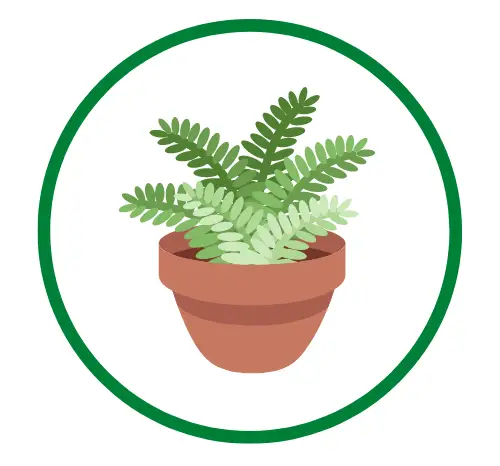Pitcher Plant Soil Guide: Recipes, Composition, and Shops
If you own any indoor plants, you are aware that you will occasionally need to repot them. Because pitcher plants occasionally require repotting, they aren’t all that different from houseplants in that regard.
When and how should a pitcher plant be re-potted? It’s time to take your plant out of its pot and discard the old soil when it’s still dormant, which should be just before spring. Then you’ll need to create a brand-new potting mixture and carefully repot the pitcher plant in the new soil mix.
For Pitcher plants to remain healthy, it’s essential to use the right soil. For new Nepenthes owners, selecting and purchasing the proper potting medium can be difficult. I’ll go over everything you need to know to choose the best soil for your Pitcher plant in this guide.
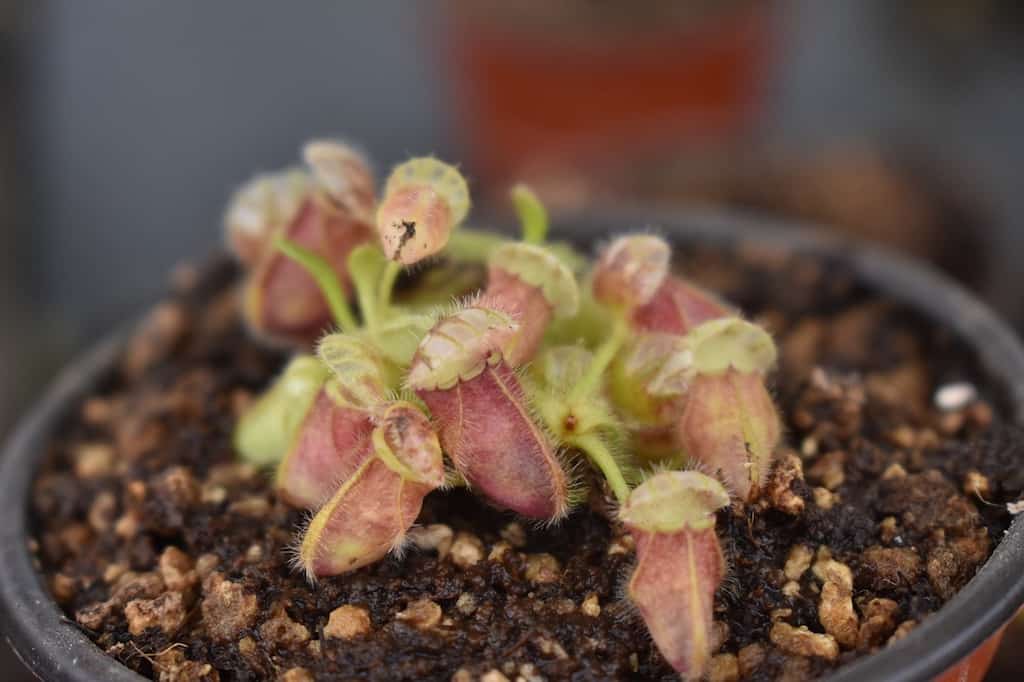
Pitcher plants need soil with drainage and moisture retention. Common ingredients in most Pitcher plant soil mixtures include sphagnum moss, peat moss, orchid bark, perlite, and horticulture sand, for example a 2:1 ratio of sphagnum moss and silica sand.
We wrote this article to aid you in re-potting pitcher plants because there isn’t a lot of information available on the subject. We’ll go into detail on repotting pitcher plants and provide you with a ton of other important information.
I didn’t know what kind of soil carnivorous plants needed when I initially started cultivating them. However, I have discovered how to manufacture and purchase carnivorous plant soil for Pitcher plants, sundews, Venus flytraps, and many other types after some research and personal experience caring for my plants.
This article will assist you in choosing the proper soil for your plant and in deciding whether to make it yourself or purchase it online. For your convenience, I’ve provided some links to internet retailers.
Why Do I Need to Repot My Pitcher Plant
The mix in the container shrinks and compacts with time, necessitating periodic repotting of your pitcher plant. The roots of your pitcher plant find it quite challenging to expand as a result. If you’re wondering how frequently you’ll need to repot your pitcher plant, the basic rule of thumb is every year or every two years. Early in the spring is the ideal time to repot your pitcher plant.
The time of year to repot is after the winter dormancy period has passed. Then, with your pitcher plants, you’ll embark on your early spring excursion. If you need more plants, you can divide your existing ones after the winter.
- An appropriate potting mixture must be made.
- Later on in this article, we’ll provide you a more thorough list of the elements for potting mixture.
- Additionally, we’ll go over how to create that potting mixture and repot your plants using it.
- Your pitcher plant needs to be taken out of its previous container.
- Throw away the old potting soil.
- In the fresh planter, place the pitcher plant.
- Make sure the plant’s roots are covered before adding the planting mix.
To get the mixture to settle, tap the planter on a table. Add more on top after you’ve finished that. To get rid of air bubbles, you’ll also need to water the mixture. The combination should then be topped off, if needed.
Suitable Potting Media for Nepenthes
Pitcher plants have a very distinctive appearance, as well as very distinctive needs. Mineral exposure can be very harmful to nepenthes. These plants are extremely vulnerable to any nutrients present in the water or soil. Pitcher plants flourish in environments with few nutrients.
Pitcher plants should never be planted in common potting soils like Miracle-Gro, succulent soil, or cactus soil. Use carnivorous plant soil instead; it has a low mineral content and frequently contains components that aid in drainage and aeration.
For Pitcher plants, carnivorous plant soil typically contains one or more of the following components:
- Long-fibered sphagnum moss
- Peat moss
- Perlite
- Orchid bark
- Silica sand (horticultural)
Online retailers offer soil for carnivorous plants that is suitable for Pitcher plants. Over the past few years, I’ve experimented with a few different soil mixtures. I’ve provided links to a few that I’ve previously used below. You’ll be directed to Amazon.com by the links. There is enough soil in a bag, which costs between $10 and $15, to pot most medium-sized Nepenthes.
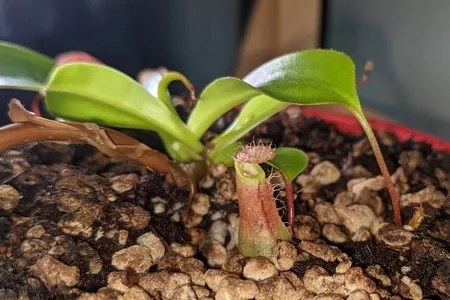
By adhering to some basic recipes, pitcher plant soil can also be made. The section after that walks you through the procedure.
Recipes for pitcher plant soil
Buying premade Pitcher soil blends for plants ensure that the potting medium is suitable for your plant. Making your own soil requires extra caution because mistakes can ruin the final product.
Each component you use to create the soil must be pure; it cannot include any fertilizers or nutrients. For instance, be sure to purchase pure peat moss rather than MiracleGro peat moss. Minerals that can kill Pitcher plants are present in abundance in MiracleGro.
The pictures below are some examples of nutrient-free perlite and peat moss:


Here are some illustrations of Pitcher Plant soil recipes:
- 100% long-fibered sphagnum moss
- 100% peat moss
- 2:1 Long-fibered sphagnum moss and silica sand
- 2:1 Long-fibered sphagnum moss and perlite
- 2:1 Peat moss and perlite
- 3:1:1 Peat moss, sand, and perlite
Nepenthes can be grown in sphagnum moss or pure peat, but those materials are not the best. Since they both hold moisture and don’t contain any minerals, they are suitable for carnivorous plants, but they both lack drainage. Pure moss shouldn’t be used with Pitcher plants for the best results. To help loosen the soil and avoid soil compression, substitute some perlite or silica sand.
When growing carnivorous plants, the presence of perlite or sand in the soil can have a significant impact. They keep the ground preserved for longer periods of time and prevent root rot. Because of the additional aeration, they also encourage growth.
The recipes on the list are examples of soil mixtures I’ve previously used. Don’t stress too much about exact ratios; just make sure you purchase the right components. Your soil will still be appropriate whether you add a little more or less sand. Just make sure you broadly adhere to the recipe ratios.
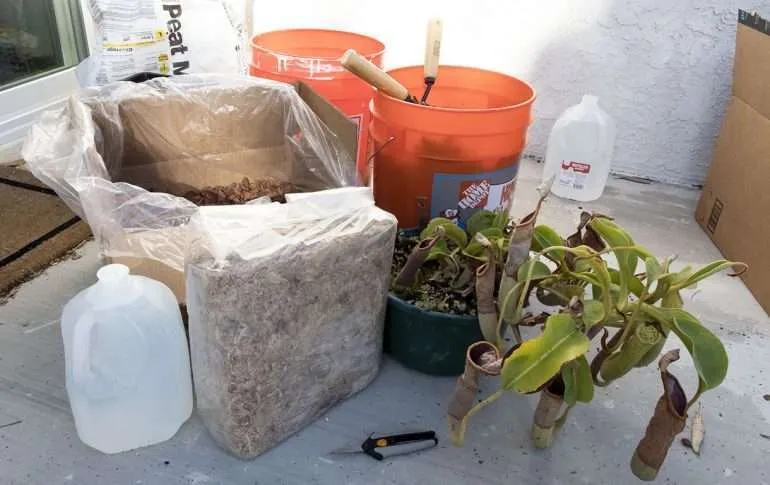
How to Pot and Repot a Pitcher Plant
Pitcher plants can live in the same pot for several months or even years without experiencing any problems, but repotting has many advantages.
To pot or repot your Pitcher plant, adhere to the steps listed below:
Repot your Nepenthes whenever the plant outgrows the pot, the soil appears compacted and mushy, or when it has been 1-2 years since the previous repotting. Fresh potting soil promotes growth and guards against health problems like rotting and mold.
- Assemble some soil for carnivorous plants, a pot, and clean water.
- Water your Pitcher plant to moisten the soil.
- The media around the pot’s edges can be broken up with your hands.
- Pull the plant and soil out of the container with care.
- To get rid of the potting media as much as possible, use some pure water. Try to get rid of most of the outdated media for best results.
- Remove any dead foliage, roots, or leaves. Trimming bare root plants is simple.
- The new soil should be prepared by being pre-moistened with pure water.
- If you’re using peat moss, insert the plant after creating a hole in the moist moss. If you’re using sphagnum moss, grab a piece of it, wrap it around the roots, and then place it all inside the pot.
- To help the soil settle, water the pot from the top.
- Check the soil with your fingers for air gaps. Add more potting media as necessary. Although the ground needs to be placed, it shouldn’t be compacted.
- In the upcoming one to three weeks, pay close attention to your plant because it might be struggling from the shock of the repotting.
The procedure for repotting Pitcher plants is also described in the video below:
Make sure you gather all the materials you need to pot your nepenthes before hand.
The best pots for Pitcher plants are made of plastic, glazed ceramic, or wood, and they have drainage holes. Do not use terra cotta or clay pots. Medium-sized plants work best in 5-inch pots due to their size.
Consider the calendar and your knowledge of the species you own as you schedule your repotting. For instance, while some Pitcher plants go into dormancy, others don’t significantly change throughout the year. The suggested time for repotting can change depending on these factors.
The end of dormancy or just before the beginning of the growing season are the ideal times to repot Nepenthes. Repotting Pitcher plants should be avoided since the shock may hinder their growth during the growing season. Additionally, avoid giving Pitcher plants more than one annual repotting.
When growing Pitcher plants, there are numerous other factors to take into account in addition to the soil and potting requirements. The following section gives you a concise guide on Pitcher plant care.
Pitcher Plant Care
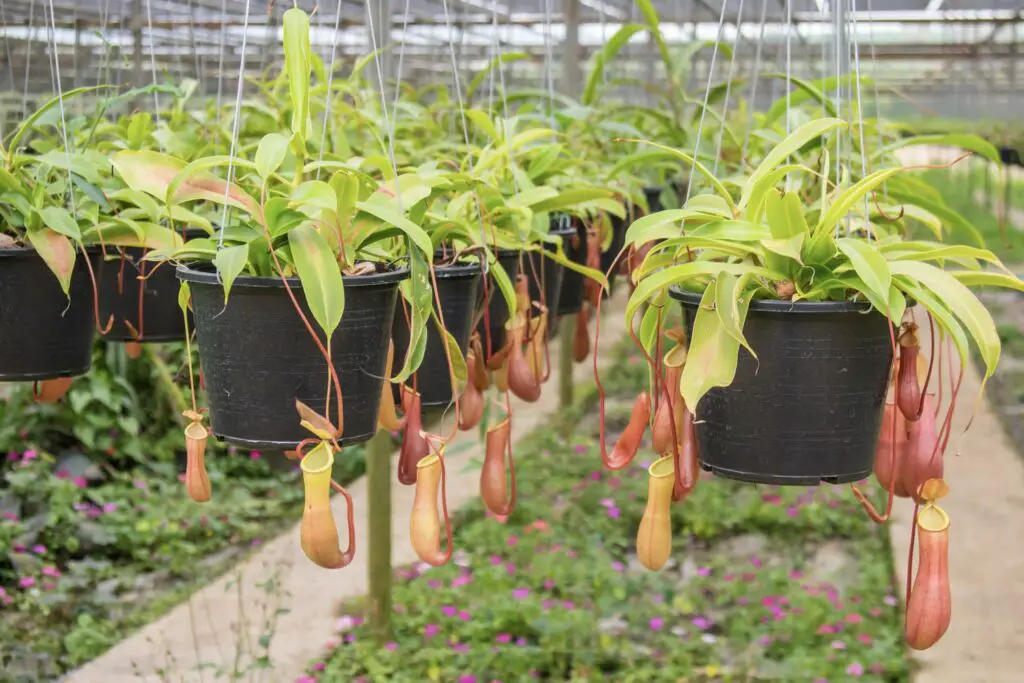
To create a suitable setup and maintain the health of your Pitcher plant, heed the following care instructions:
Nepenthes prefer sunny environments for lighting conditions. Provide more than 10 hours of light exposure through natural or artificial light every day. Your plant can be grown either outdoors in the sunlight or indoors with grow lights.
When growing Nepenthes indoors, LED and fluorescent lighting are popular options. Simple artificial lighting can be used for nepenthes.
Never use tap water or bottled water to water pitcher plants because they frequently contain too many minerals for most carnivorous plants. Use only reverse osmosis, rainwater, or distilled water.
Water frequently to keep the soil constantly moist.
Soil. Always use ground devoid of nutrients. Perlite or silica sand mixed with peat moss, sphagnum moss, or both are acceptable potting media choices. For nepenthes, think about combining 60% long-fibered sphagnum moss and 40% silica sand.
Humidity: Most pitcher plants benefit from high humidity. A recommended humidity level is greater than 50%. Consider using a humidifier if you live in a dry area. Pitcher plants suffer and stop producing pitchers when there is insufficient moisture.
Trimming: You can trim dried up leaves once they have withered completely. Avoid trimming healthy leaves at all costs.
Feeding: Pitcher plants naturally catch insects. The plant doesn’t typically need to be manually fed. However, pitcher plants might not have access to nutrients if they are grown indoors.
Pitcher plants are simple to feed. Just throw a bug into a pitcher every once in a while. A single bug can supply the entire plant with nutrients.
Fertilizers: Not required.
Pots: Use drainage-equipped plastic, glazed ceramic, wood, or glass pots. Avoid using terra cotta, clay, or metal pots because they can cause pitcher plants harm by leaching minerals into the soil.
Dormancy: Some pitcher plant varieties require dormancy.
Outdoor vs. Indoor growth: Determine whether your nepenthes prefer an indoor or outdoor environment. Try to create an environment that is similar to their natural habitat as a good tactic.
